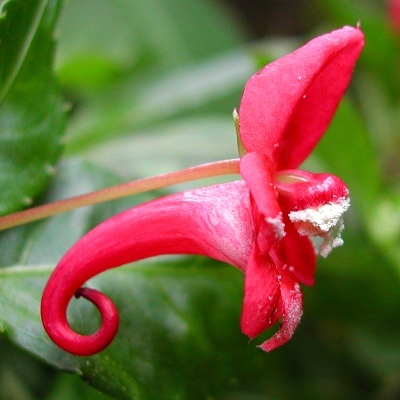Pot size -- A full-size plant may be grown in a 1 or 2 gallon pot, but you may start it in a smaller pot if you wish. Soil -- Like most Impatiens, this one likes fertile, well-draining soil. A typical soil mix is 2 parts potting soil to 1 part perlite or coarse sand. An alternate mix is 3 parts coir fiber or peat moss to 2 parts perlite. Don't add lime to the mix unless you use peat moss. Transplanting -- Transplant carefully to avoid damaging the delicate roots. For the first week after transplanting, avoid direct sun, and don't feed it. Impatiens sometimes wilt during or after shipping. If this happens, leave it in its original pot and cover it with a clear plastic bag that has a dime-sized hole in it. Each day, make another hole the same size. You should be able to remove the bag after a week. Watering -- Your plant likes evenly-moist conditions. Don't let the soil dry out, but don't keep it soggy either. If your water is "hard" (very high in minerals), you may need to use bottled water or rain water. Lighting -- This Impatiens does best in filtered light. Prolonged direct sun might burn it, unless it's morning or late afternoon sun. In warmer conditions, keep it well shaded in the afternoon. Climate -- Little is known about its climate preferences. If the plant lags in hot weather, you might need to bring it into a cool room. I don't think it can survive freezing temperatures. Indoors, if the humidity drops below 40%, consider using an ultrasonic room humidifier, sold at home improvement stores and thrift shops. Fertilizing -- Your Impatiens likes average amounts of fertilizer. If using a slow-release fertilizer, feed about every 2-3 months. It's normal for an older leaf to occasionally turn yellow and drop, but if it seems excessive, the soil may be too dry, or the plant may need more fertilizer (nitrogen). Pests to watch for -- Scale (little brown disks on the stems - hard to see), aphids, spider mites (tiny "dots" under the leaves), whitefly, mealy bugs. If you have any questions, feel free to email me. Enjoy your plant! - Jeff Strange Wonderful Things
|
|||||||||


